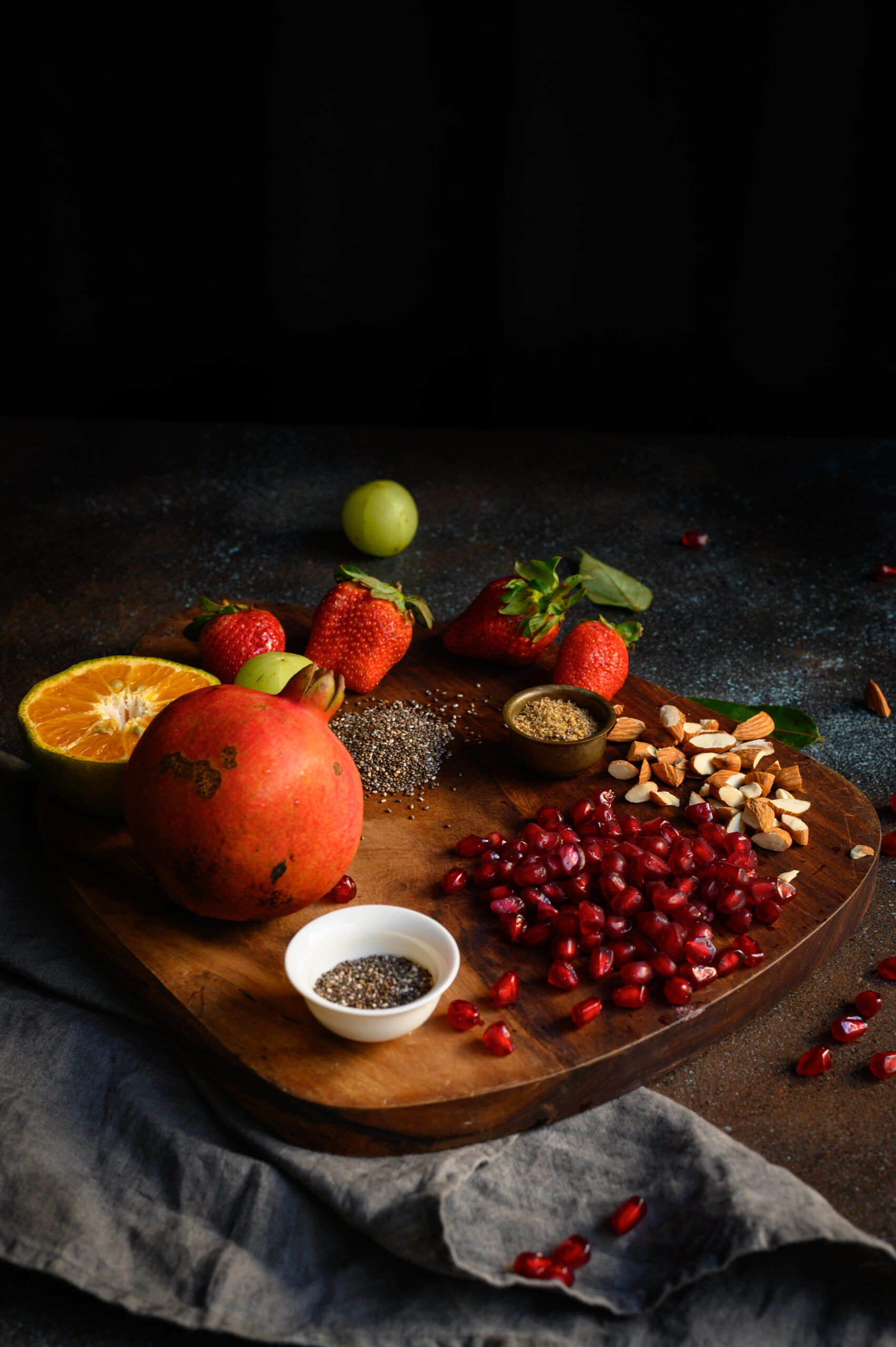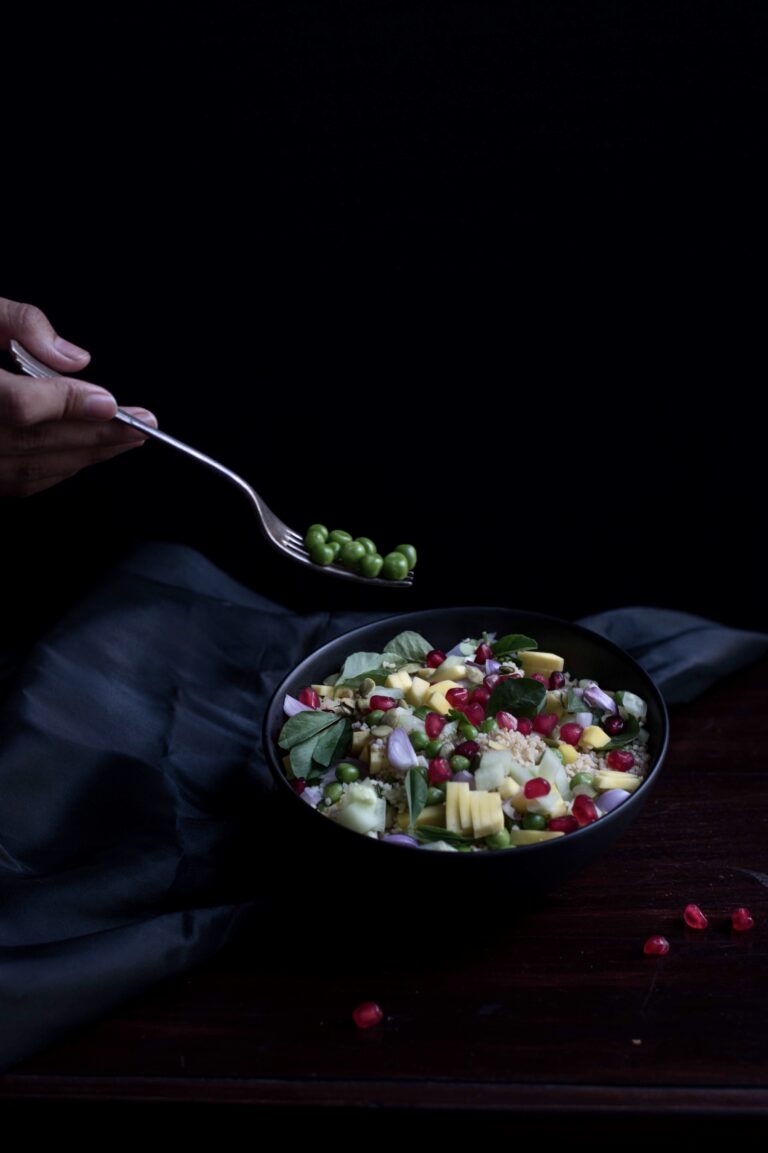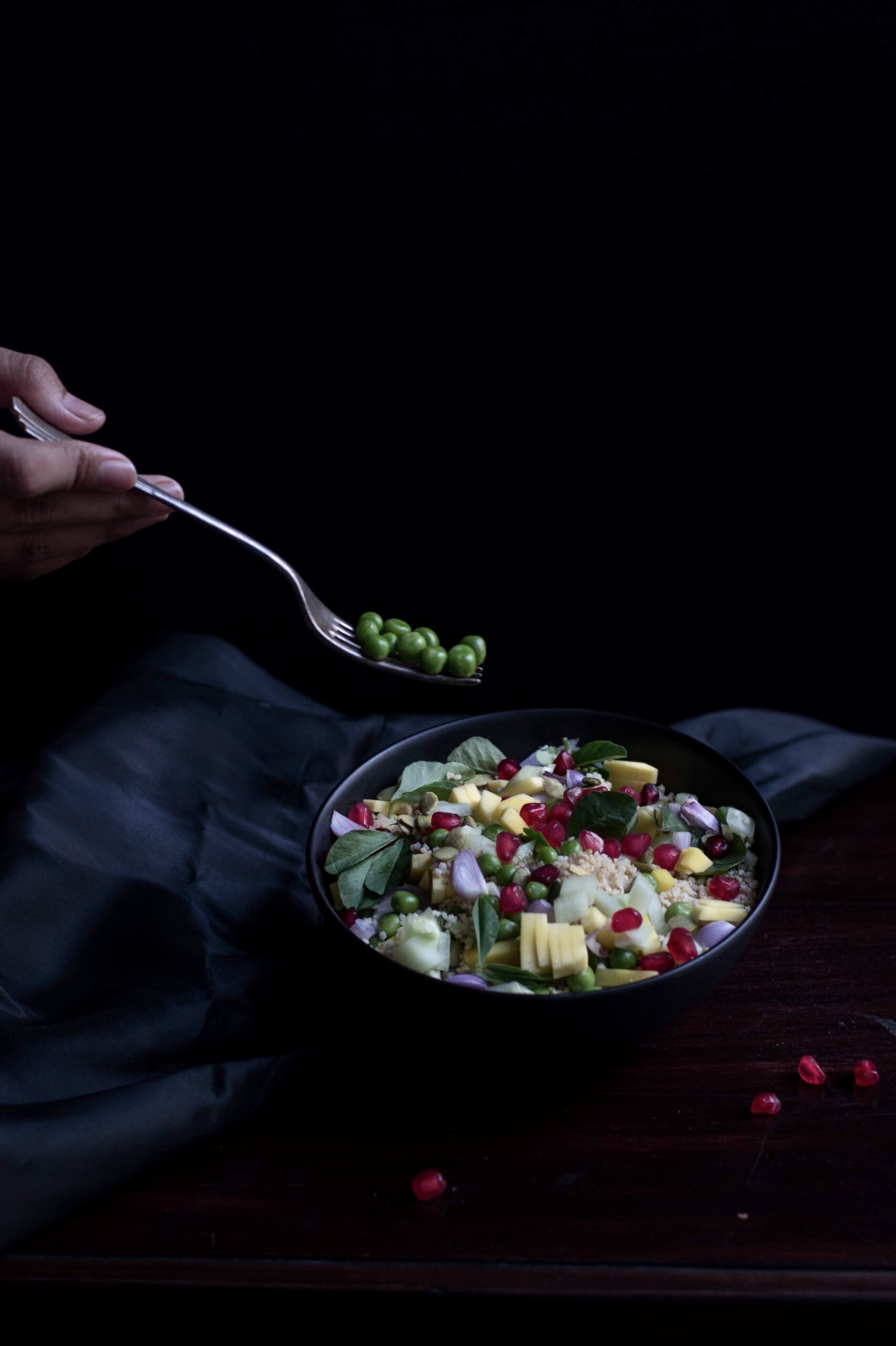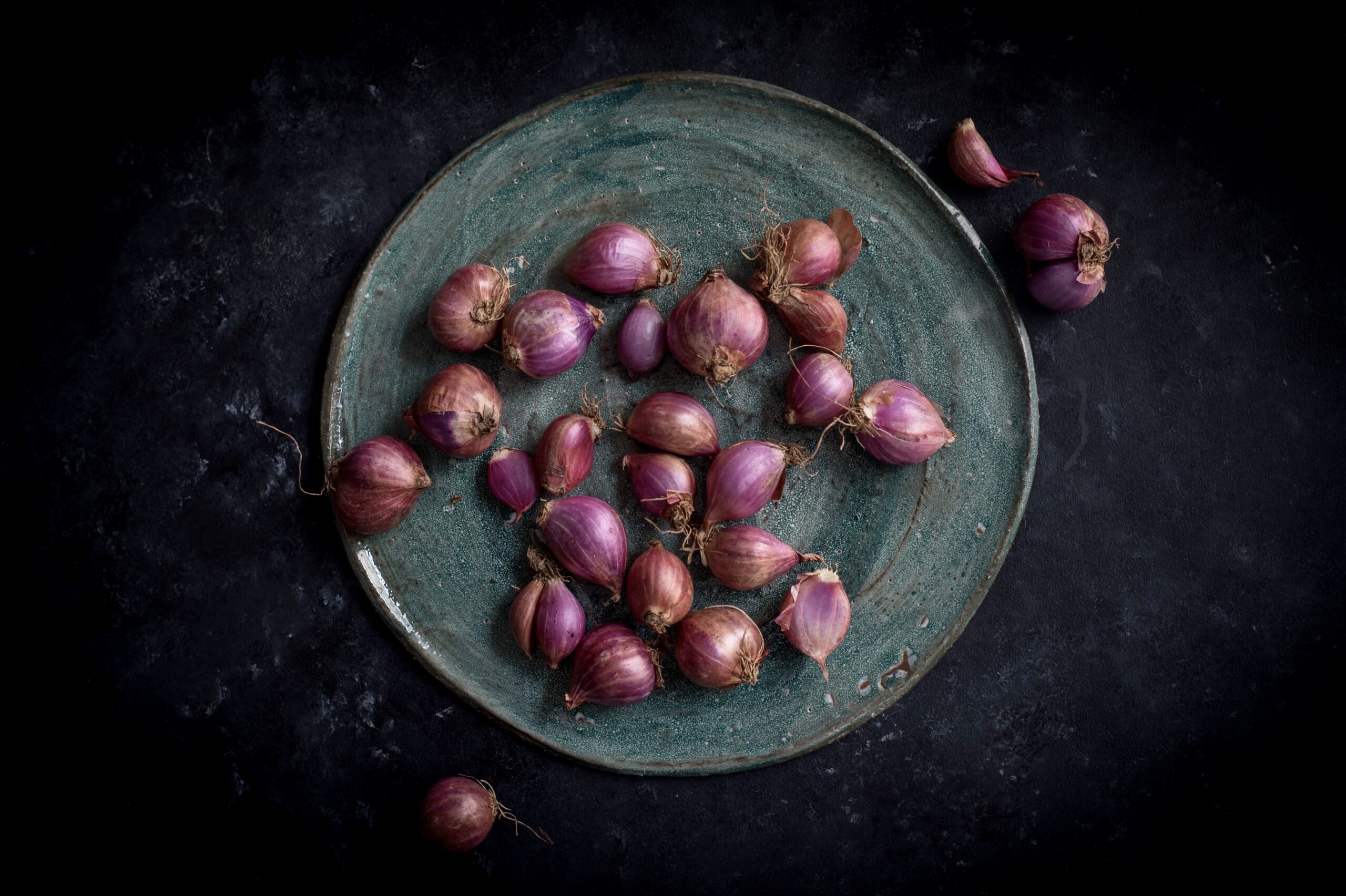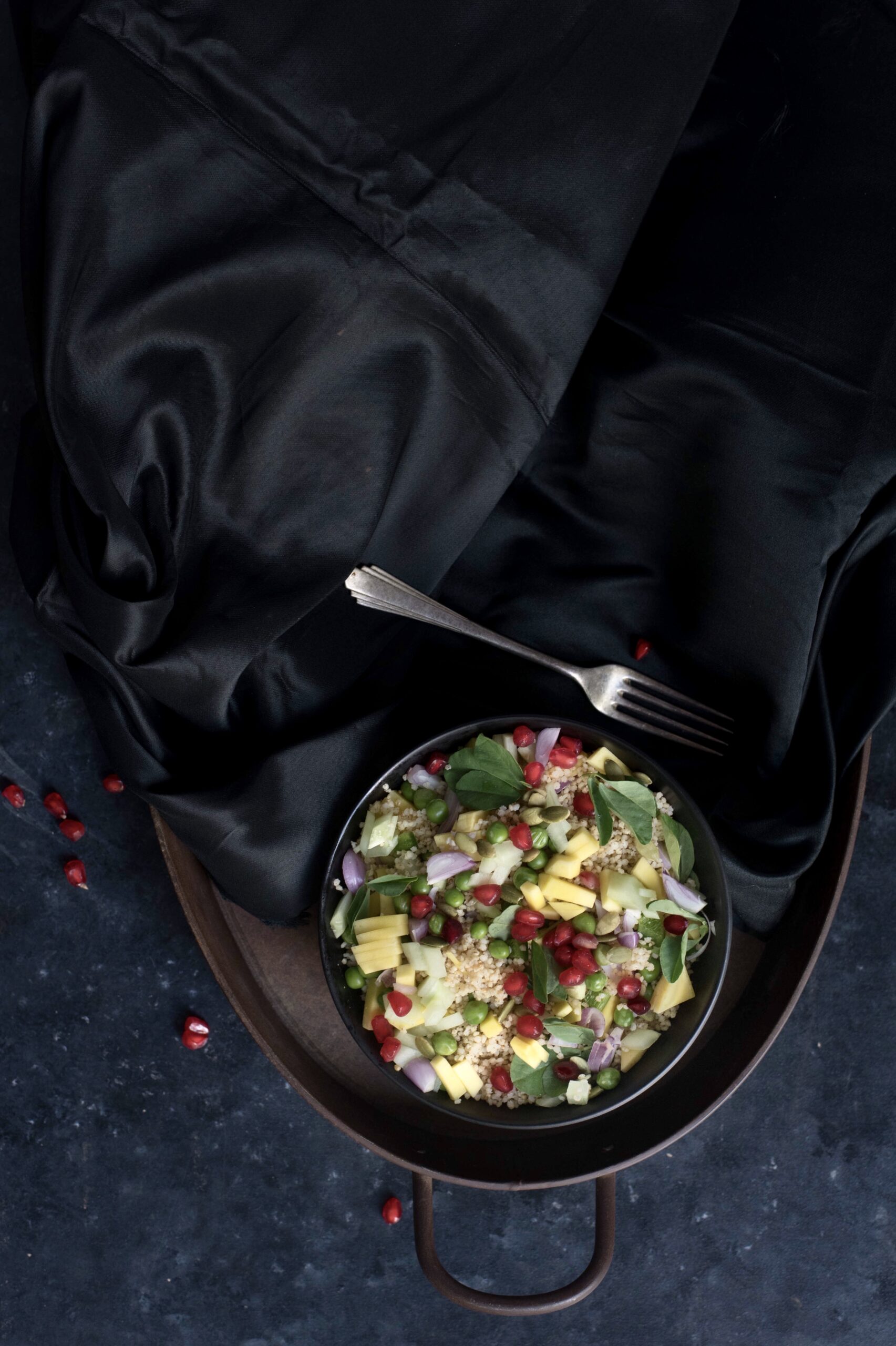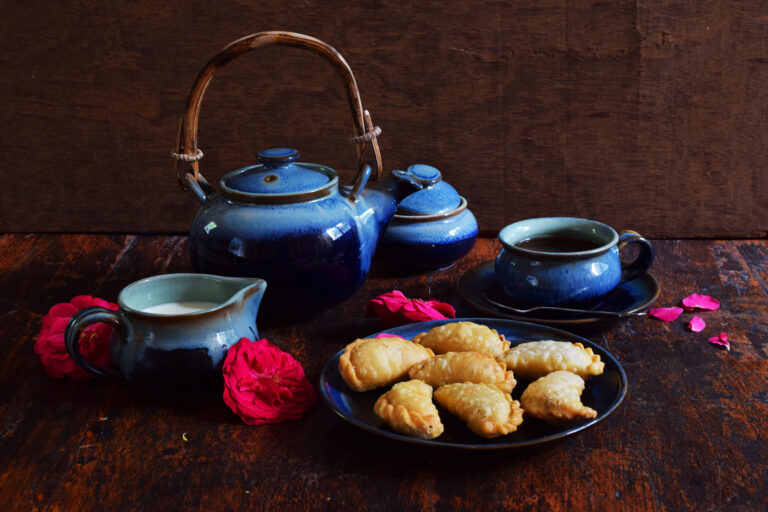Strawberries are in season right now, and are easily available at my regular grocery outlets, and I know this is true for many Indian cities. I love tossing a few of these sweet fruits into the blender, along with a fantastic mix of healthy ingredients, to whip up a smoothie in no time. I’m not a great fan of green smoothies, especially ones which involve raw spinach! While I know they are good for us, I have had an aversion to them ever since I once fell sick after having one. It’s interesting how memory and food are so strongly correlated. Our experience of food becomes a memory, and informs our next experience of the same item. But this fun, fruity smoothie is only a repository of goodness for me.
I highly recommend smoothies if you are currently going carb-free or observing a thoughtful diet. They pack a lot of nutrition into a single glass and are very filling. There comes a point when one realises the value of eating healthy and age-appropriately. This is especially important for women who undergo many physiological changes with age. Chia seeds and flax seeds are two ingredients which are particularly beneficial for us, lowering the risks of certain cancers, balancing the hormones and providing nutrition that addresses post-menopausal needs. You can sprinkle these onto salads or lightly onto various dishes, incorporating them into daily meals. I am also keen on innovative ways that centre them as major ingredients. You may remember my take on the trendy chia seed pudding here.
As with my recent stir-fry recipe and so many others that have been shared on this blog over the years, this smoothie recipe is highly adaptable based on personal tastes and dietary needs. For example, my son likes an addition of protein powder in his smoothies. I personally not only hate the taste but am against such chemical supplements, so you’ll never find the same in mine. When I find that I’m in need of a protein boost, I head for these overnight oats or a similar recipe. The use of natural ingredients is important to me, and I don’t like to compromise on this.
This smoothie is based on flaxseed meal and chia seeds, with an eclectic and ever-changing mix of other ingredients. I prepare it through the year, so while strawberry is my current star, I will substitute the base fruit depending on what is seasonal. What’s fresh and being harvested right now matters, as well as what I used to call my mood or state of mind, but which I now recognise as something deeper. I’ve come to understand that what we think of as cravings can sometimes be needs. When your body is asking for a dish, it is sometimes because of the need for a specific ingredient, and its positive effects. The healing or nourishing benefits of that ingredient may be what my body requires each time I feel an urge for a particular taste. We must learn how to listen to our bodies well so that we can identify the underlying need and address it. This means that I may add a bit of turmeric or ginger to my smoothie on certain days, because there’s an extra boost my body is asking for.
My craving for this smoothie itself sometimes reflects my body’s desire for sugar, and I find that this is one of the healthier ways to meet it – through fruits. It’s a great appetite-sater between meals. Nowadays, I often have it for breakfast, or in the evenings if I’ve eaten a complete meal in the morning instead.
As I said earlier, there’s presently an abundance of strawberries in hill stations all over India, and they are plentiful in our urban supermarkets. I believe strawberries are the easiest berry variety to grow in our climes, and they must be a newer crop as they don’t form a major part of my memories of school holiday summers in Ooty. My most cherished memories of strawberries are from trips abroad. It was wonderful to relive my childhood experience of going strawberry-picking with my aunt in America with my own kids. We ate until we were sick of strawberries, if there could even be such a thing!
That reminds me also of a long-ago visit to Italy. Somewhere just outside of Rome, I came upon a place where wild strawberries grew lushly. They were marble-sized, as small as raspberries. I learnt very little about them except that they had a very short growing season, and that they tasted sublime served with whipped cream. They also looked so beautiful that I don’t think I’d blend them into a smoothie even if you gave me a basket of them today. Their incredible flavour was meant to be relished whole. Fortunately for us here in India, strawberry crops of a good quality that are perfect for smoothies are now easily available.
Still, they carry an air of exoticness to me, and it’s never stopped being amazing to me that in some places, sweet strawberries grow the way that mangoes and bananas grow in our own backyards. We don’t care if they fall to the ground or become pulp, if monkeys steal them and just leave their skins, or if they just go to waste. The reverse must be true for those in countries where strawberries run wild, who would be alarmed that we take our own abundant tropical fruits for granted!
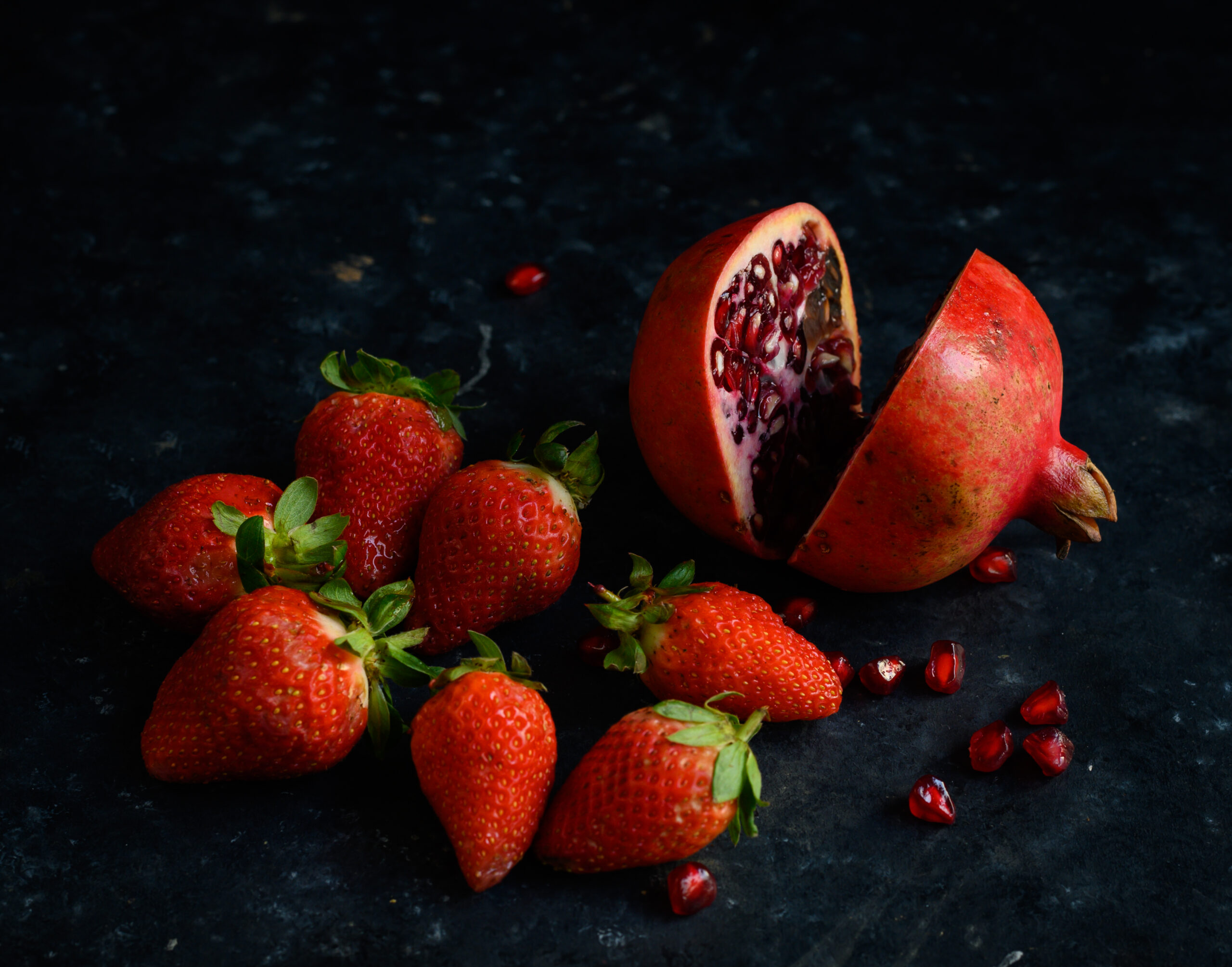
Strawberry Smoothie
(Yield: 1 glass)
3-4 strawberries
½ cup pomegranate arils
1 cup orange juice
1 amla (gooseberry)
1 teaspoon flax seed powder / flax seed meal
1 teaspoon chia seeds
4-5 almonds
Water as required
Put all the ingredients into a blender. Add water, either at room temperature or cold/iced, depending on your preference. You may also add mint leaves, as I do sometimes, if you want to enjoy that flavour.
Blend well and serve. That’s really the entire method! The beautiful simplicity of smoothies is part of what lets you be creative with the ingredients. In my home, the components change daily. A seasonal fruit, however, is always the base and the key.
Although some people add nuts directly into their smoothies, I often have a handful of whole ones alongside my drink instead. Walnuts and almonds are my favourites. Together, they form a light but nourishing meal.
You’ll find this strawberry smoothie highly flavourful and filling. It definitely falls into that “how can something so tasty be so good for you?” category! The convenience of putting it together, as well as how quickly you can consume it during a busy day, are also attractive points that make it a dish that’s well worth incorporating into your lifestyle. I’d love to know if you try it out!
